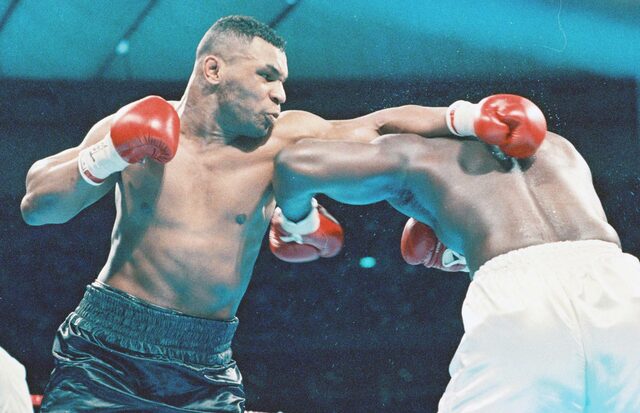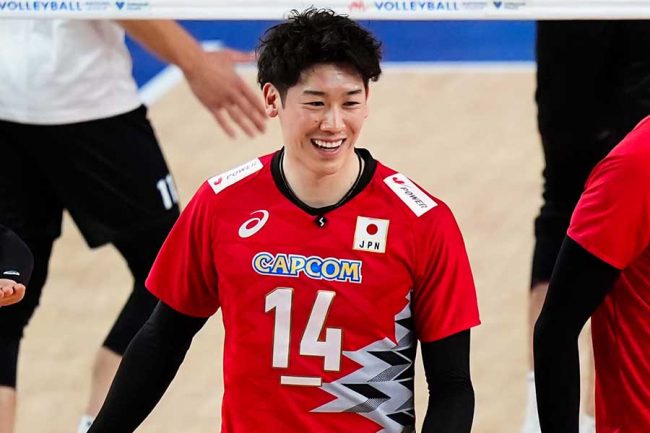
Boxing weigh-ins are an important process to ensure the fairness of matches and the safety of athletes.
This step certifies that the fighter is within the weight limit for their weight class and ensures that the matchup is on fair terms.
Weigh-in is more than just the act of weighing; it is a demonstration of an athlete’s readiness, health, and professional commitment.
In this article, we’ll take a closer look at the weigh-in process, how athletes prepare when they weigh in, and the impact it has on the overall boxing competition.
目次
- 1 What is boxing weigh-in?
- 2 Weighing process: step by step
- 3 Weighing failure and its consequences
- 4 Strategies for success: secrets to weight management
- 5 Weighing and mental health
- 6 Post-weighing recovery and preparation
- 7 History and evolution of boxing weigh-in
- 8 Everything about boxing weigh-ins: a summary from rules to strategy
What is boxing weigh-in?
A boxing weigh-in is a formal process that takes place before a fight to ensure that the fighter is within the weight limit for the weight class established to compete.
This process is essential to ensure fairness between athletes and avoid disadvantages due to weight differences.
Here, we will delve into the basic rules of boxing weigh-ins and their purpose.
Basic rules of boxing weigh-in
Weigh-in usually takes place the day before the match and takes place at an official location using official scales.
Athletes must attend the weigh-in within the designated time and prove that they are within the weight limit for their weight class.
The weigh-in is public to the promoter, the opposing team, and often the media, and the results of the weigh-in are immediately made public.
Athletes who are over the weight limit may be given a limited amount of time to drop their weight, but if they still fail to meet the standards they may be fined or have their match cancelled. There is also.
the purpose
The main purpose of boxing weigh-in is to keep the competition fair.
Weight differences have a huge impact on power, stamina, and endurance, so it’s important for athletes to compete within the same weight class in order to compete on equal terms.
Weighing in to ensure that athletes are within the specified weight limits protects athlete safety while maintaining the legitimacy and competitiveness of the match.
The weigh-in also serves as an indicator of how the athlete has managed their weight in preparation for the match, and serves as an opportunity to demonstrate the athlete’s professionalism and preparation.
Through this process, boxing matches become safer and fairer.

Weighing process: step by step
A boxing weigh-in is an important milestone in a fighter’s journey to a successful fight.
From the preparations the day before the weigh-in to the flow on the day of the weigh-in, each step has a huge impact on the athlete’s physical and mental state.
The weighing process is explained step by step in detail below.
Preparation the day before weighing
-
Managing fluid intake : The day before the weigh-in, athletes must carefully manage their fluid balance. Although it is common to control weight by eliminating excess water, it is important not to completely stop drinking water to avoid dehydration.
-
Fuel up with snacks : During the process of losing weight, athletes tend to lack energy. The day before the weigh-in, eat a light meal that is easy to digest to maintain your physical strength.
-
Relaxation : The day before the weigh-in, the mental pressure increases. To stabilize your mental state, light stretching, meditation, and getting enough sleep are recommended.
-
Final check of weight : The night before the weigh-in, check your weight again and make any necessary adjustments. You want to avoid situations that require significant weight adjustments at this point.
Flow of the day of weighing
-
Morning weight check : On the morning of the weigh-in day, athletes will check their weight again to ensure they have reached their target weight. If necessary, make final adjustments using light exercise or a sauna.
-
Participation in official weigh-ins : Weigh-ins will take place at officially designated locations and times. Athletes arrive at the weigh-in venue within the stipulated time and wait for the weigh-in process.
-
Weigh-in and Health Check : Athletes take turns on the weighing platform and have their weight measured. Additionally, in many cases, your health condition will be checked by a doctor at the same time as your weigh-in.
-
Official Results Announcement and Fight Card Confirmation : If the weight meets the weight limit, the athlete is eligible to compete and the fight card is confirmed. If you are overweight, you may not be allowed to participate in the match or you may be penalized.
-
Pre-match nutrition and recovery : After weigh-in, athletes focus on recovering their strength and energy. Aim for optimal condition for the match by eating properly and hydrating.
The weigh-in process is part of the athlete’s fitness and preparation for the match.
Planned preparation and execution are the keys to a successful weigh-in.
Through this process, players build the foundation for their best performance in the game.

Weighing failure and its consequences
In boxing, weigh-ins are an important step in qualifying for a fight.
When an athlete fails a weigh-in, it means not only that they exceeded their weight class limit, but that they failed in their professional responsibilities, and the repercussions are often severe.
Let’s take a closer look at the penalties imposed by measurement failures, their main causes, and countermeasures.
Penalty for being overweight
- Fines : The most common consequence of a weighing failure is a fine. This fine is often deducted from a fighter’s fight money, creating a financial hurdle to competing.
- Match Cancellation : Matches may be canceled if you are significantly overweight or if your weight does not fall within the specified weight range even after re-weighing. This is a huge loss for the players and a source of disappointment for promoters and fans as well.
- Elimination from Title Fight : Failing the weigh-in in a title fight may disqualify a fighter from competing for the title. This can be a huge blow to your career.
- Negative impact on reputation : Failed weigh-ins can raise questions about professionalism and negatively impact an athlete’s reputation.
Main causes and countermeasures for measurement failures
- Causes : The main causes of weigh-in failures are improper diet, unplanned weight management, excessive water intake, and mistakes in the training process.
- countermeasure :
- Proper Diet and Nutrition Plan : It is important to work with a professional to develop a scientifically-based diet and nutrition plan.
- Regular weight checks : You should check your weight frequently in the lead up to a competition and make adjustments to maintain your goal weight.
- Professional support : Increase your chances of successful weigh-in with professional support such as a nutritionist or trainer.
- Maintaining your mental health : Developing stress management techniques can also help you cope with the pressure of weigh-in.
In order to be successful at the weigh-in, you need to manage your weight from a long-term perspective and prepare thoroughly for the match.
In order to minimize the risk of weighing errors, it is important to work with experts and manage your weight scientifically and strategically.

Strategies for success: secrets to weight management
In boxing, proper weight management is very important for a successful weigh-in.
Efficient and healthy weight management for athletes has a direct impact on competitive performance.
Here are some effective ways to lose weight and tips for managing your weight while protecting your health.
effective weight loss method
- Develop a long-term plan : It’s important to start losing weight gradually, a few weeks before a fight, to avoid rapid weight loss. Make a long-term plan and gradually adjust your weight.
- Balanced diet : A balanced diet is essential for healthy weight loss. Ensure you get the nutrients you need by eating the right balance of high protein, low fat, and carbohydrates, and including plenty of vegetables and fruits.
- Regular exercise : An exercise program for weight management should include both aerobic exercise and strength training. This allows you to maintain muscle while burning fat.
- Emphasis on hydration : Adequate hydration speeds up your metabolism and helps with weight management. However, you will need to adjust your water intake just before weighing in.
Weight management tips to protect your health
- Get enough sleep : Good sleep is often overlooked when it comes to weight management, but it can help normalize your metabolism and control your appetite.
- Stress management : Stress can lead to overeating and unhealthy eating habits. Manage stress through relaxation techniques and hobbies.
- Get the right information : Having the right knowledge about weight management can help you avoid unreasonable diets and unhealthy methods. Seek advice from a nutritionist or other professional if necessary.
- Preventing rebound : Care should be taken when eating after weighing to avoid rapid weight gain. Even after weighing in, try to eat a balanced diet and gradually return to your normal diet.
Effective weight management is the key to success for boxers.
By implementing these strategies, you’ll be in the best shape to have a successful weigh-in and perform at your best on game day.

Weighing and mental health
Weigh-in in boxing is an important event for athletes, and the process is much more than just weighing.
Weigh-in can also have a huge impact on an athlete’s mental health.
The stress and pressure that comes with weighing in can affect an athlete’s psychological state and sometimes affect their performance.
Here, we explore in detail the impact of the weigh-in process on athletes’ mental health and approaches to reduce its psychological burden.
Psychological impact of the weighing process
- Stress and Pressure : Pre-fight weigh-ins come with a lot of pressure for athletes to meet weight limits. If they fail, their participation in the match is in jeopardy, which can cause a lot of stress for the players.
- Self-image issues : The long-term process of weight management and weigh-in can affect an athlete’s self-image. Excessive focus on weight and body shape can lead to low self-esteem and unhealthy eating behaviors.
- Fighting isolation : Strict weight management can keep athletes away from social activities. This can make you feel isolated and lonely, which can have a negative impact on your mental health.
Approaches to maintaining mental health
- Build a support system : It’s important to actively seek support from family, friends, coaches, and mental health professionals. This allows you to share and deal with the pressure of weighing.
- Proper goal setting : Setting achievable and healthy goals can reduce stress and increase your experience of success. It’s important to be realistic with yourself.
- Mindfulness and relaxation : Incorporating relaxation techniques like meditation, deep breathing, and yoga can help you manage stress and maintain peace of mind.
- Seek professional support : Seeking support from professionals such as psychologists and counselors can be helpful in dealing with psychological issues.
Weigh-in can have a huge impact on an athlete’s mental health, so psychological preparation and support for this process is very important.
Through healthy weight management and a conscious effort to reduce stress, athletes can successfully weigh in and be in optimal condition for their competition.

Post-weighing recovery and preparation
After the boxing weigh-ins, fighters enter a critical period to prepare their bodies and minds for the fight.
During this time, you need to focus on proper nutrition and recovery to prepare your body for peak performance on game day.
Here we detail the recovery and preparation process from post-weigh-in to match day to match day.
Nutrition and recovery before the match
- Emphasis on hydration : For athletes who have restricted their fluids for the weigh-in, it is important to quickly restore their fluid balance after the weigh-in. Prevent dehydration by using sports drinks and coconut water that contain electrolytes.
- Refuel your energy : Replenish your energy stores with a carbohydrate-based diet. Fill your muscle glycogen stores with meals containing complex carbohydrates, such as pasta or brown rice.
- Consume high-quality protein : Consume a diet containing high-quality proteins such as chicken, fish, and legumes to help repair and recover your muscles.
- Rest and Relaxation : Get enough sleep and spend time engaging in activities that minimize stress to help your body and mind recover.
Match day preparation: Switching from weight management to performance
- Light breakfast : On game day, eat a meal that is easy to digest and gives you energy. Oatmeal and bananas are suitable.
- Dynamic stretches and light warm-ups : Before a game, do some dynamic stretches and light warm-ups to warm up your muscles and improve blood flow.
- Strengthen your mental focus : Use meditation and positive autosuggestion to increase your mental focus to stay focused on the game.
- Final review of strategy : Review your game plan with your coach and team to be confident in your strategy.
Post-weigh-in recovery and preparation is essential for athletes to perform at their best in competition.
Through proper nutrition, adequate rest, and psychological preparation, athletes can maximize their potential and succeed in competition.

History and evolution of boxing weigh-in
The practice of boxing weigh-ins has evolved over the years to ensure fairness in the sport and safety of athletes.
This section delves into the historical background of boxing weigh-ins and how advances in technology have changed weigh-in methods.
Historical background of metrology
The history of boxing weigh-ins dates back to the 18th century, when the official rules of the sport began to be formed.
However, it was not until the turn of the 20th century that weight classes were officially introduced and weigh-ins became a mandatory requirement for competition.
The introduction of the weight class system aimed to eliminate disadvantages due to weight differences and provide a fairer competitive environment.
Early weigh-ins were conducted in a relatively simple manner and provided a basic framework to ensure athlete safety and fairness.
Advances in technology and changes in measurement methods
Throughout the history of metrology, advances in technology have had a major impact on the way we weigh.
Starting with the early scale-type scales, the introduction of electronic scales made it possible to measure weight more accurately and quickly.
This innovation makes the weighing process more reliable and allows us to accurately measure the weight of athletes.
Furthermore, with the development of digital technology, it is now possible to publish weigh-in results in real time, allowing fans around the world to know the weigh-in results instantly.
This makes the weigh-in event itself of great interest among boxing fans and contributes to the promotion of the sport.
Furthermore, in recent years, rules and regulations regarding weigh-ins have become stricter to further protect the health and safety of athletes.
For example, changes have been made to prioritize athlete welfare, including regulations to prevent rapid weight loss and guidelines to ensure adequate recovery time after weigh-ins.
The history and evolution of boxing weigh-ins has been continually improved to ensure fairness and safety for athletes as sports science and technology evolve.
Weigh-in is an integral part of competitive boxing, and its methods and practices will continue to evolve.

Everything about boxing weigh-ins: a summary from rules to strategy
Boxing weigh-ins are an essential process to ensure the fairness of the sport and the safety of athletes.
Tracing its history and evolution reveals how boxing has flourished and adapted to technological developments.
The transition from early simplified weighing methods to modern, highly accurate electronic scales is an example of the impact that technological advances have had on boxing.
This evolution has increased the fairness of competition and enabled athletes to manage their weight more scientifically and healthily.
The historical background of weigh-ins shows that boxing has been an important sport since ancient times.
Efforts to eliminate the inequity caused by weight differences between athletes have laid the foundation for maintaining fairness and competitiveness in competition.
Additionally, changes in weighing methods due to advancements in technology show that the boxing world is actively incorporating new technology and striving to provide the best possible environment for athletes and fans.
In modern times, weigh-ins have become an important part of sports, and there are various rules and protocols in place to protect the health and safety of athletes.
The weigh-in has become more than just a weigh-in, it’s an important event that impacts an athlete’s readiness, health and even mental health.
By looking back at the history and evolution of boxing weigh-ins, we can understand how the sport has developed and how it will evolve into the future.
Boxing will continue to innovate and improve rules to provide a fair and safe competitive environment for athletes and fans.




